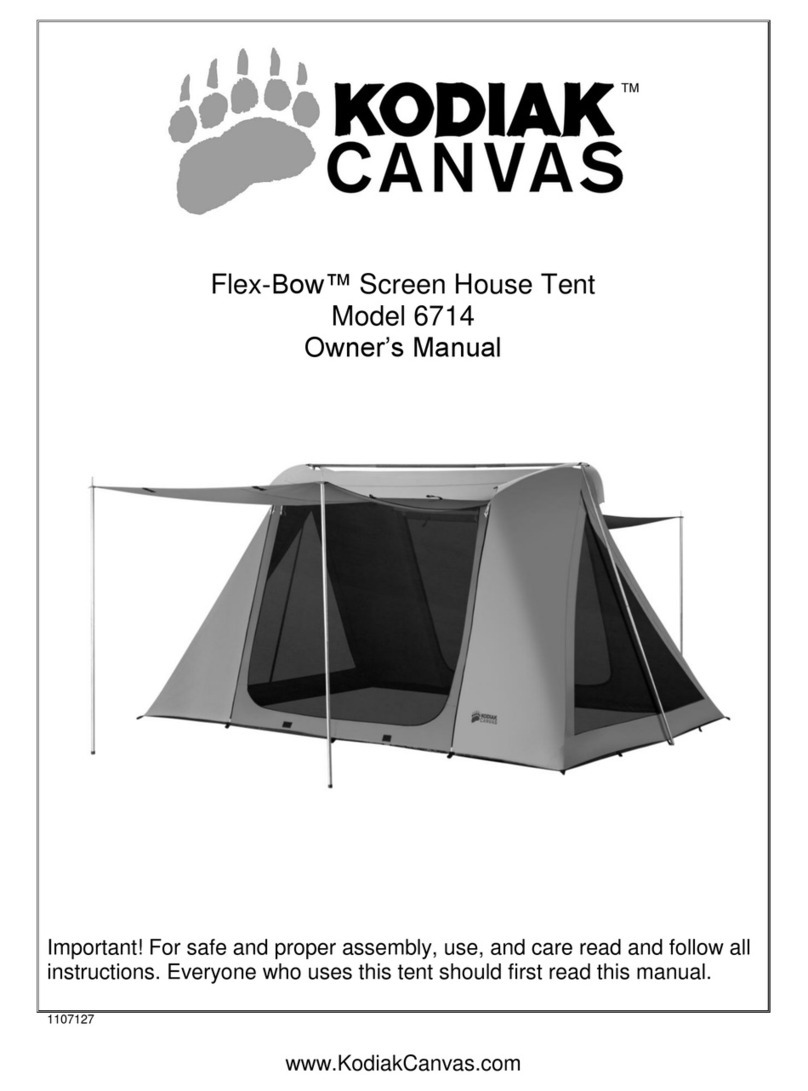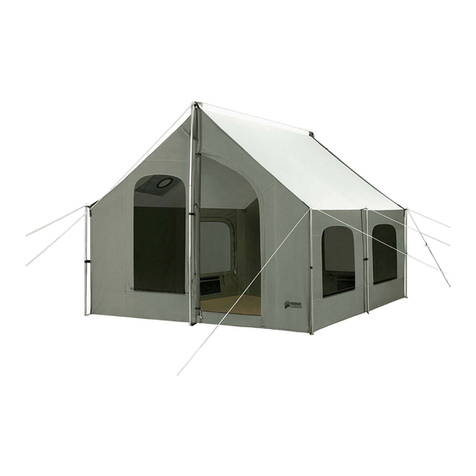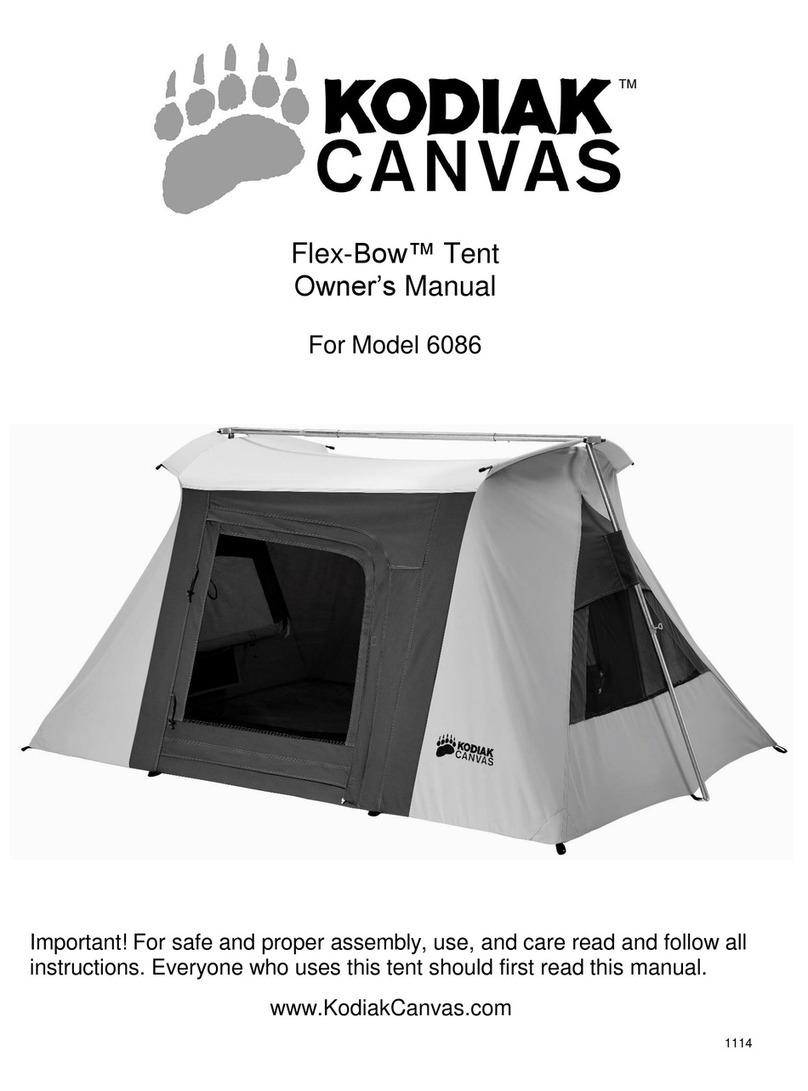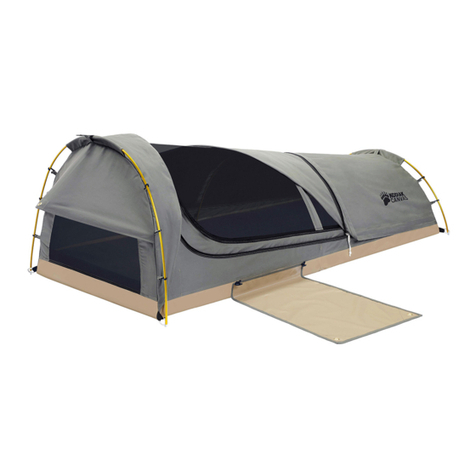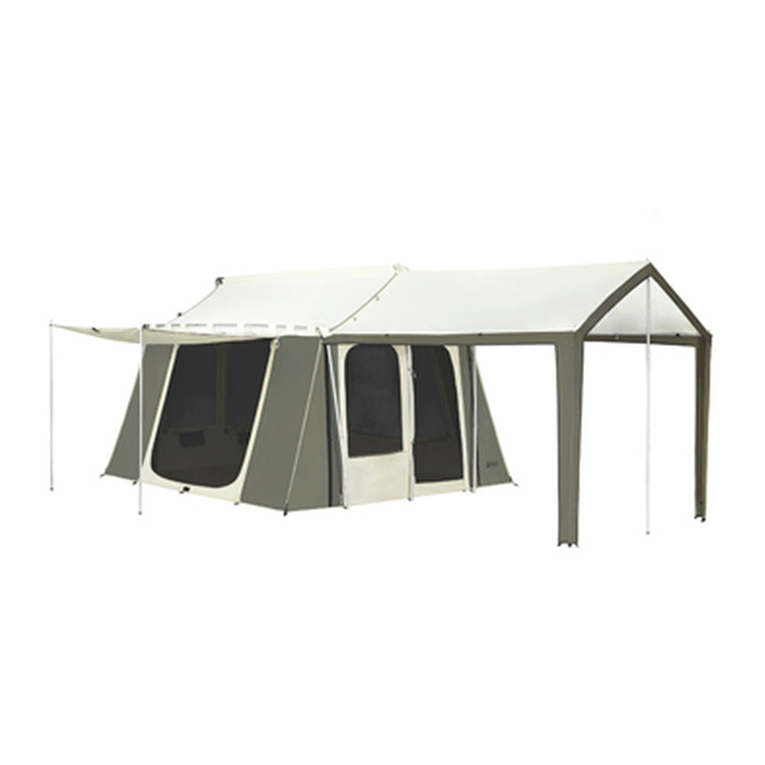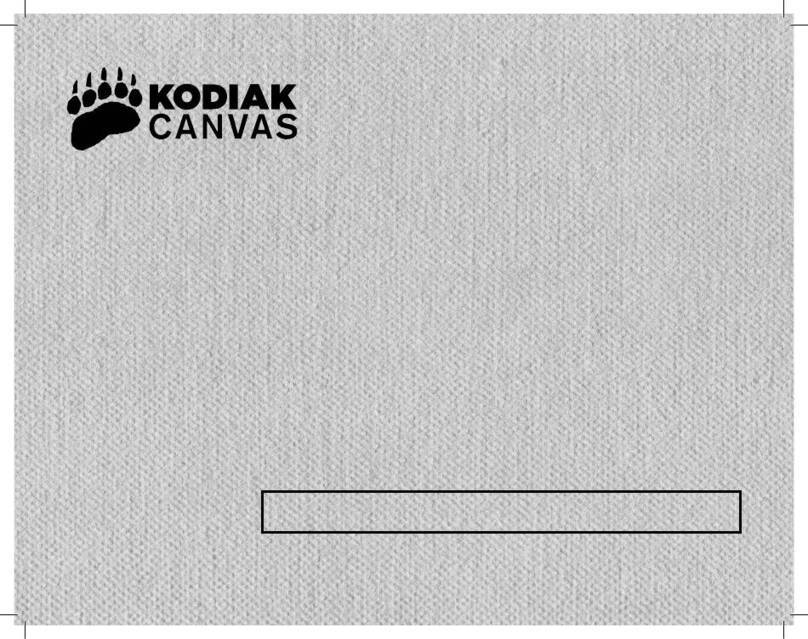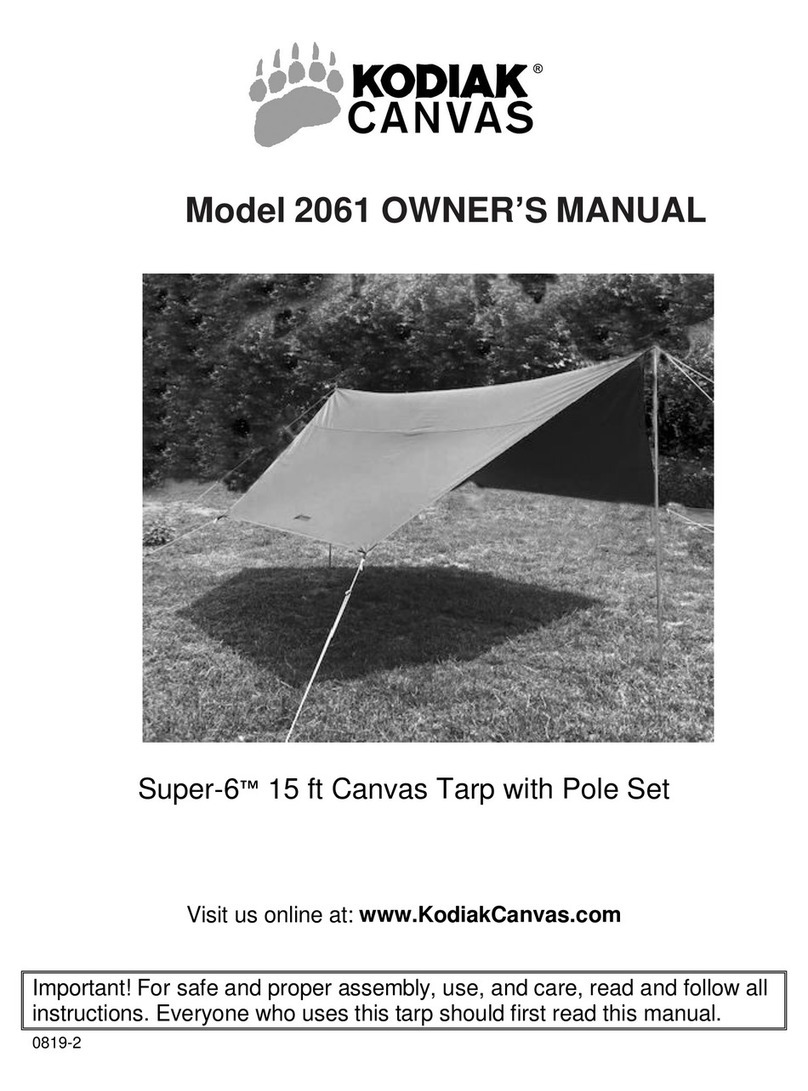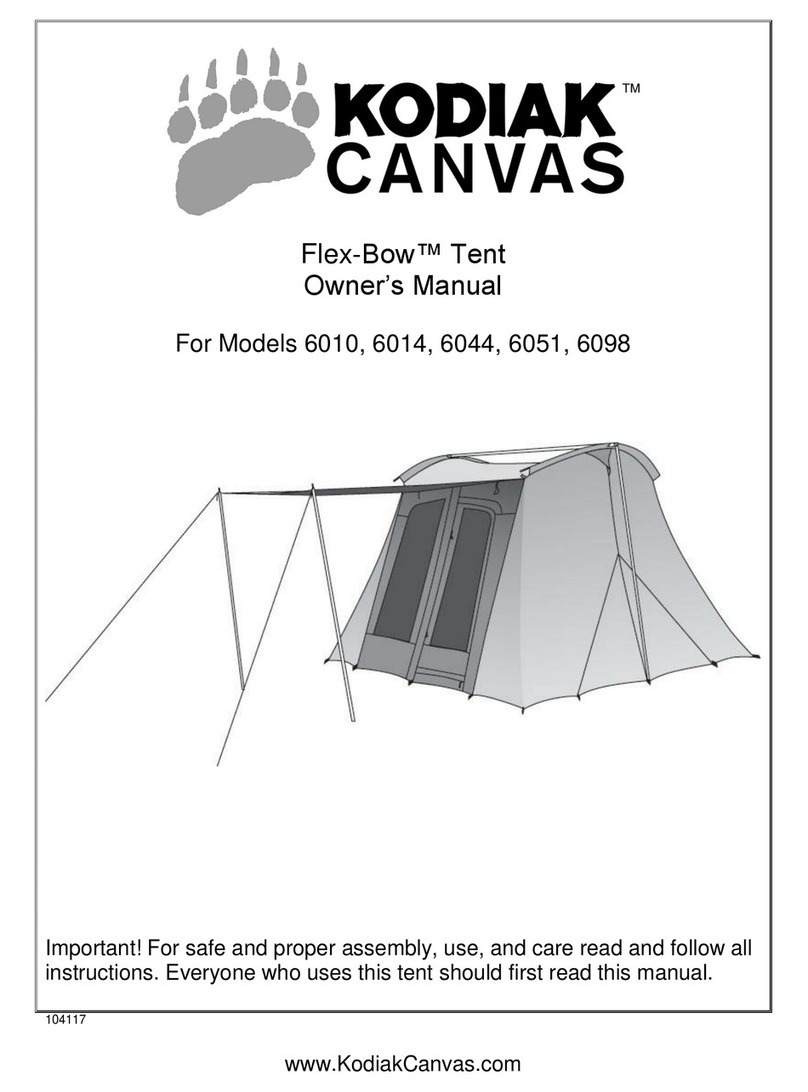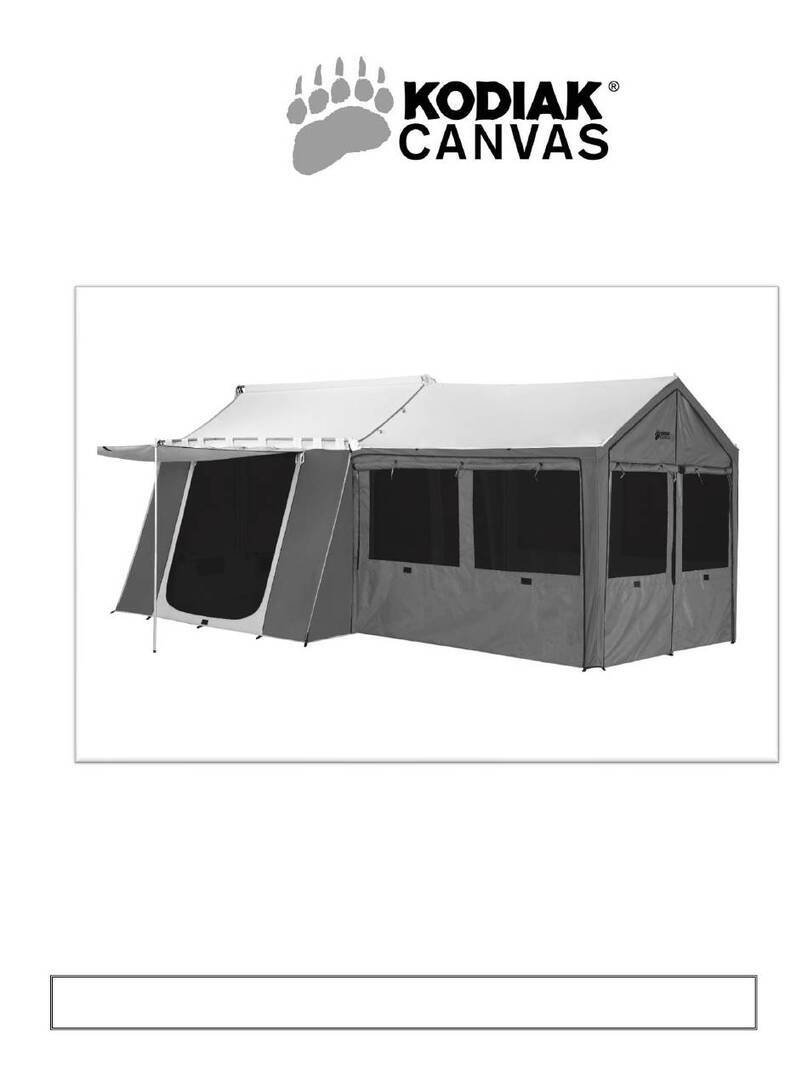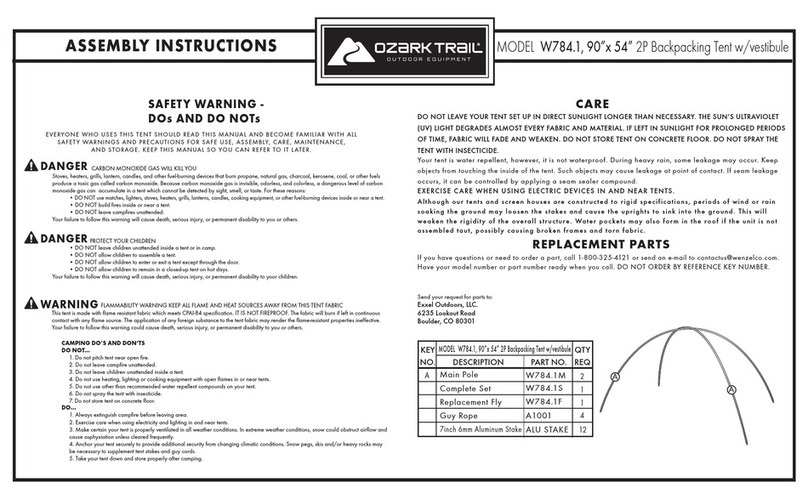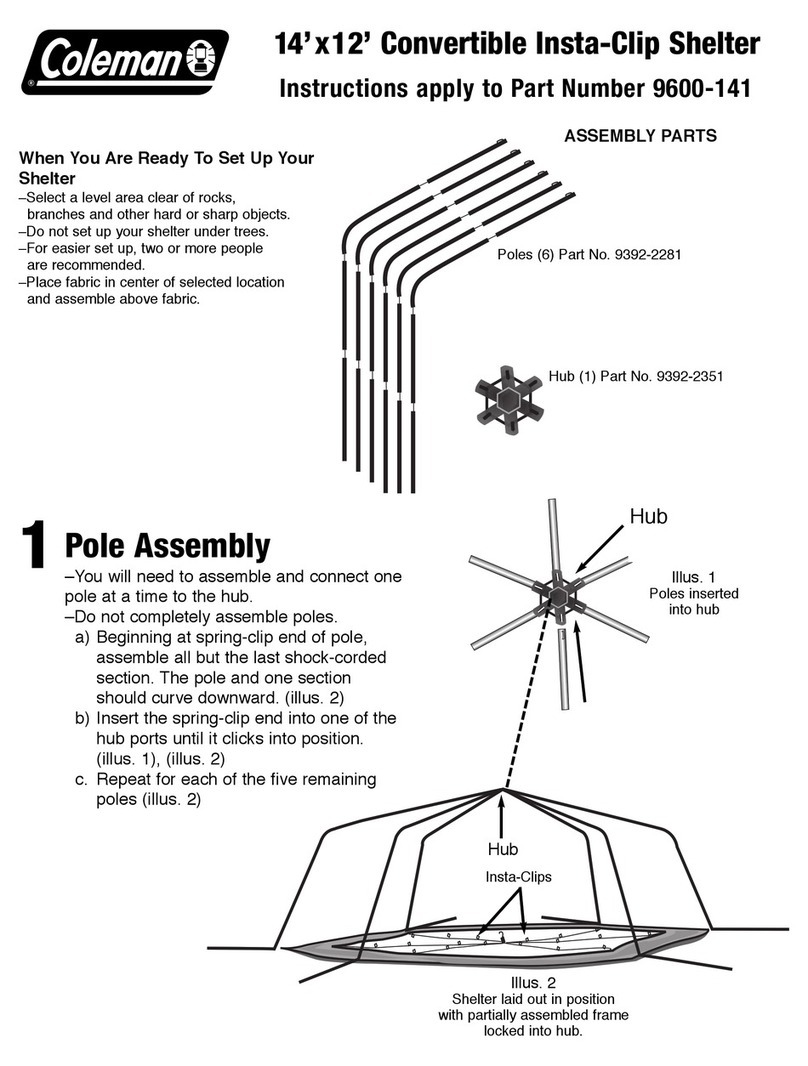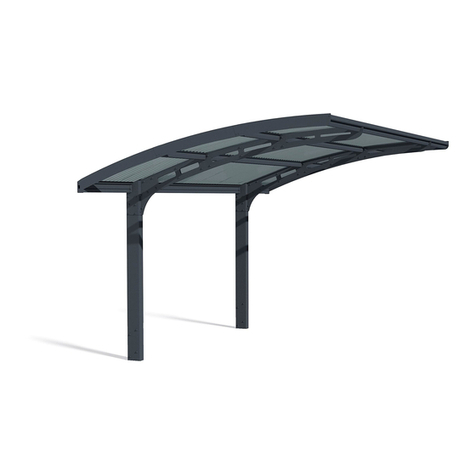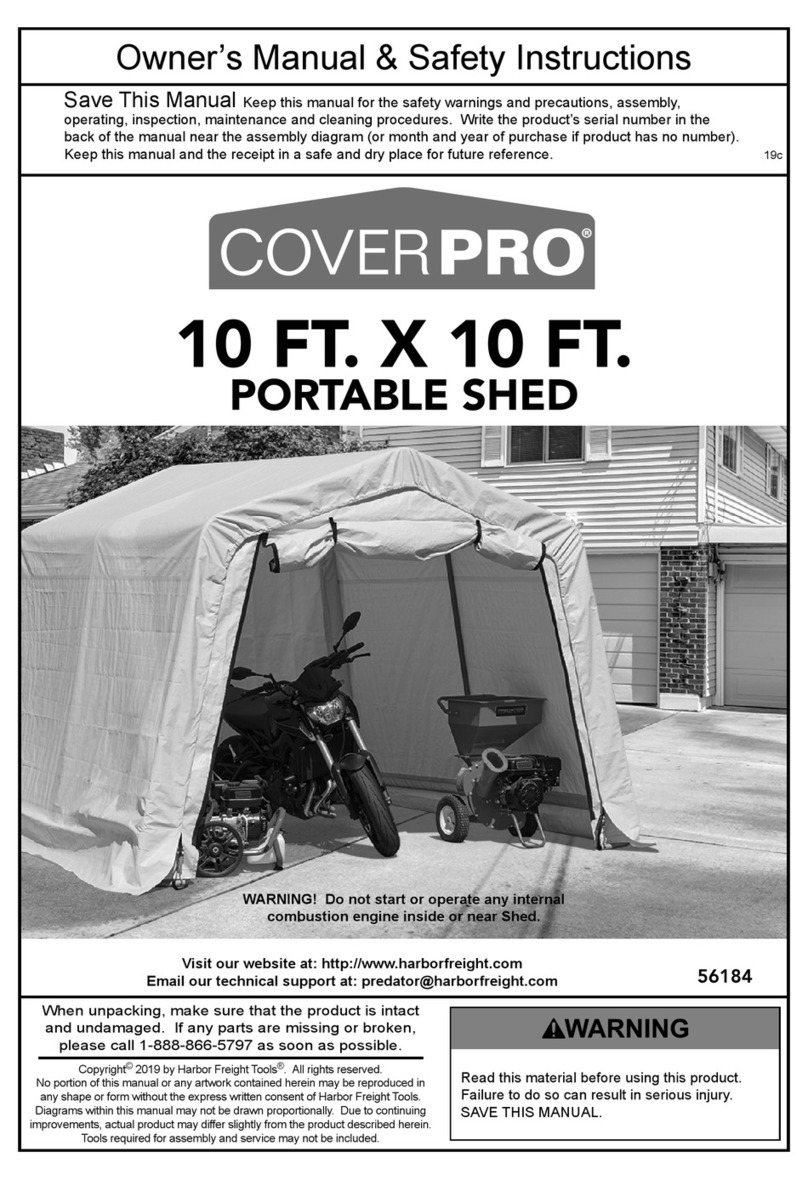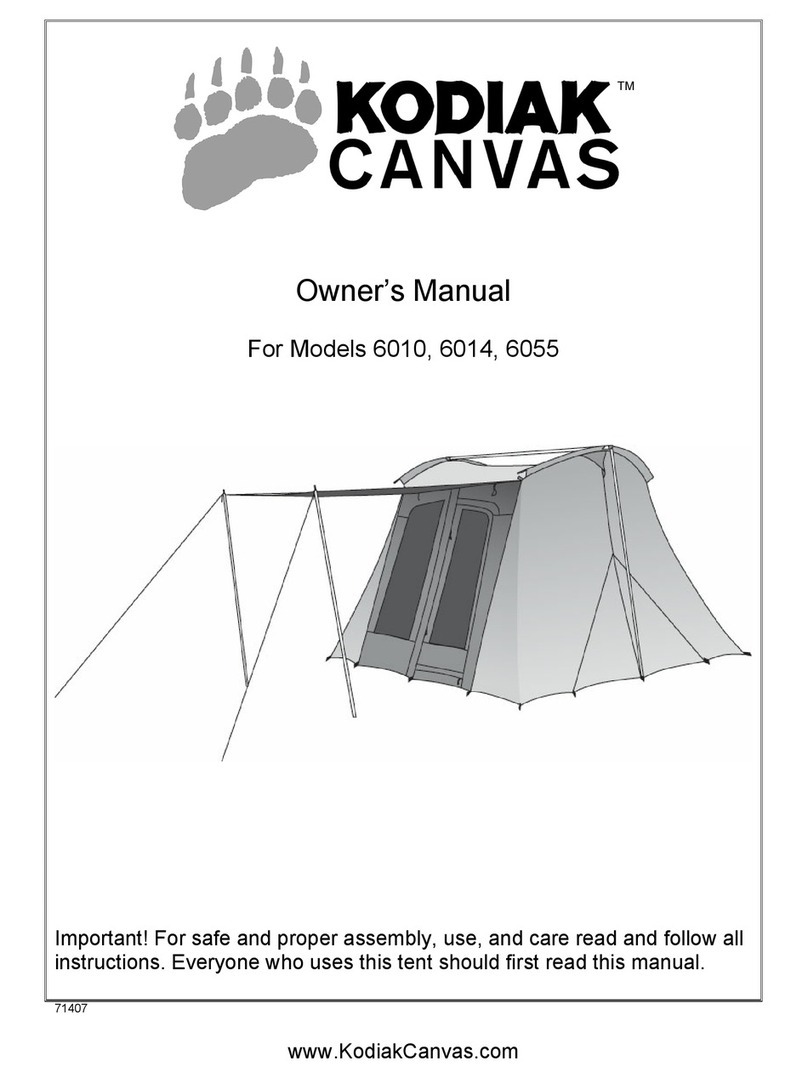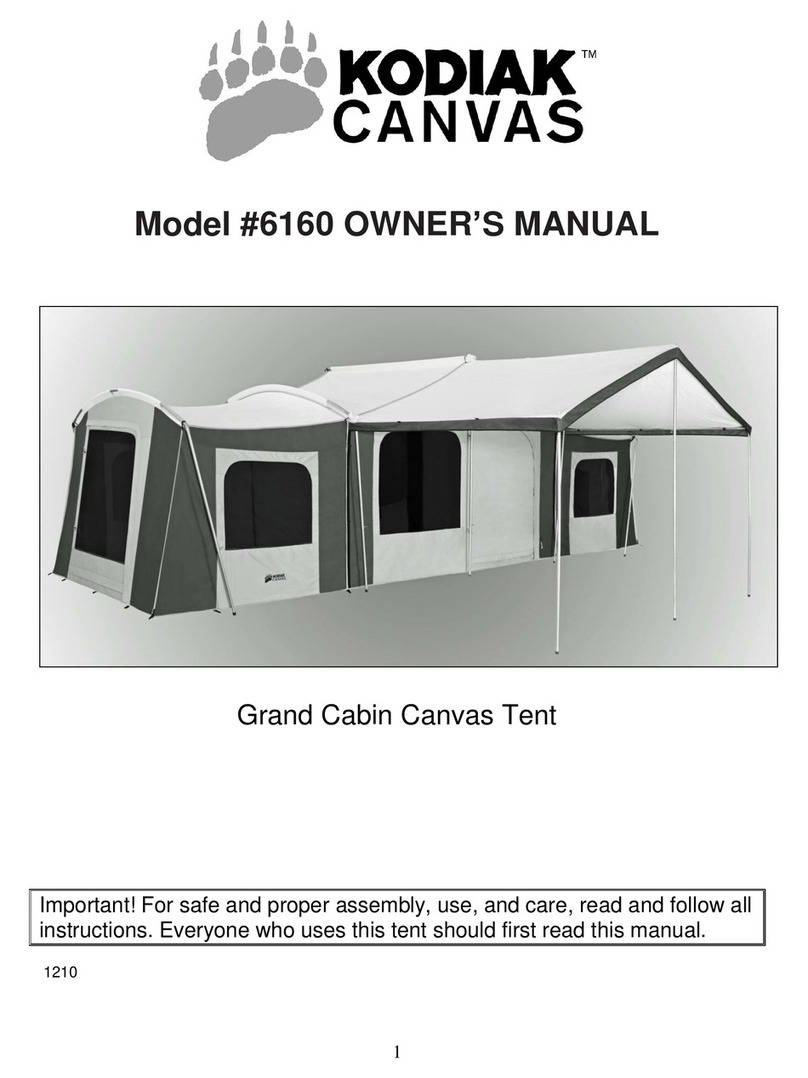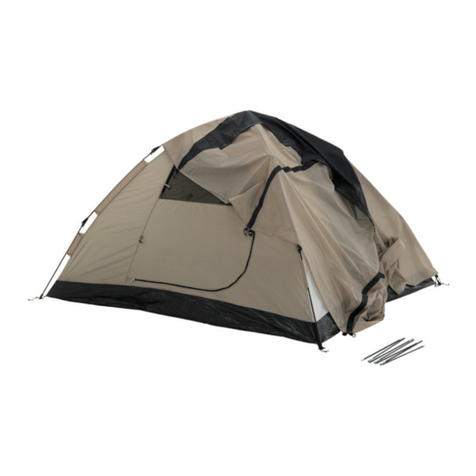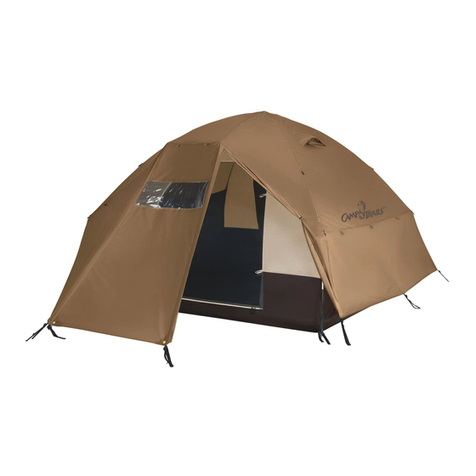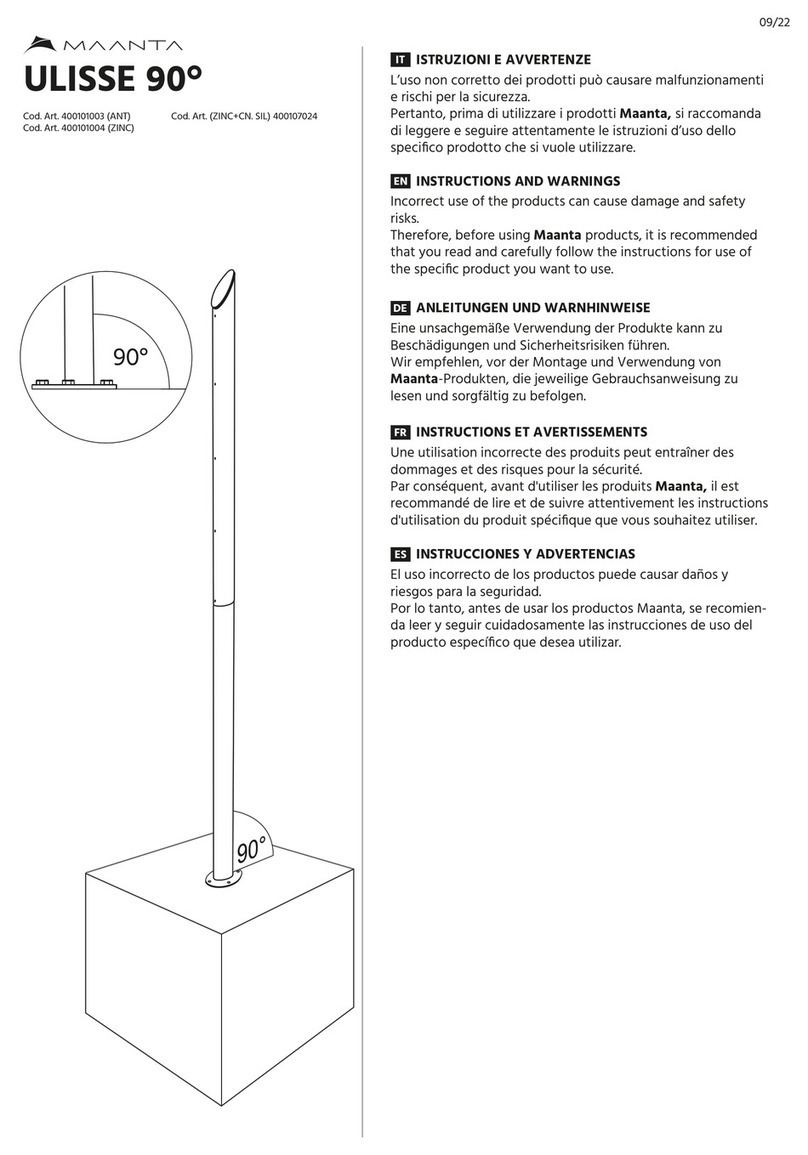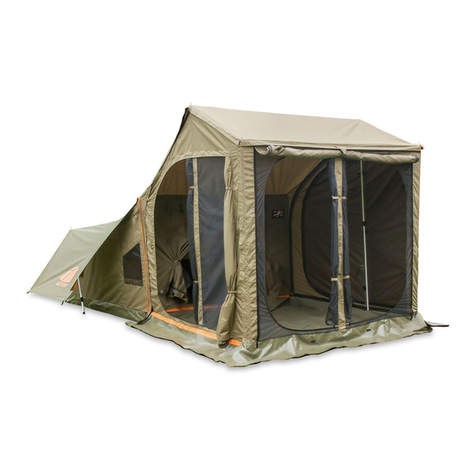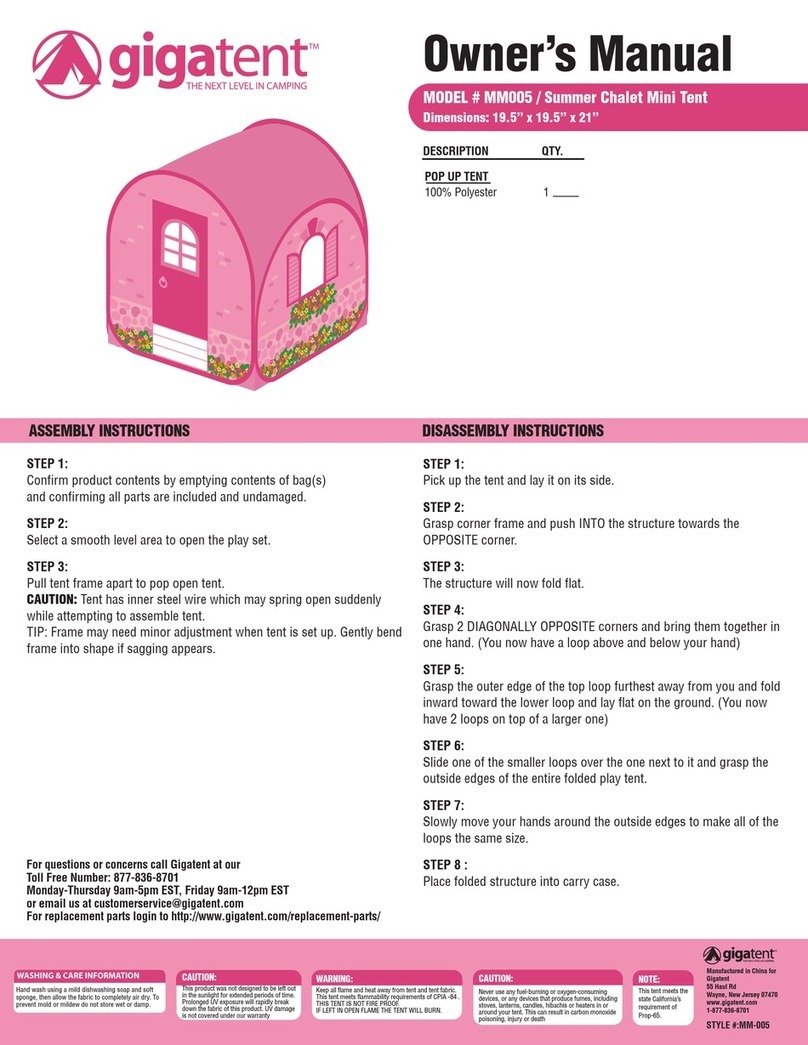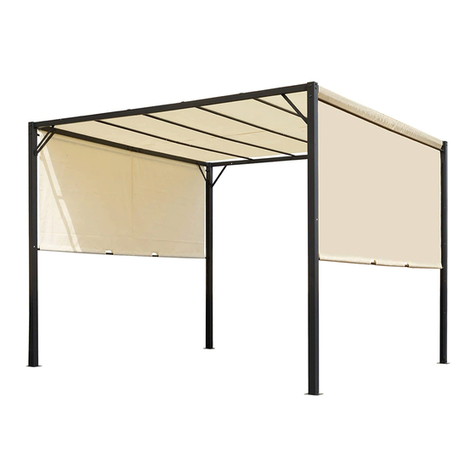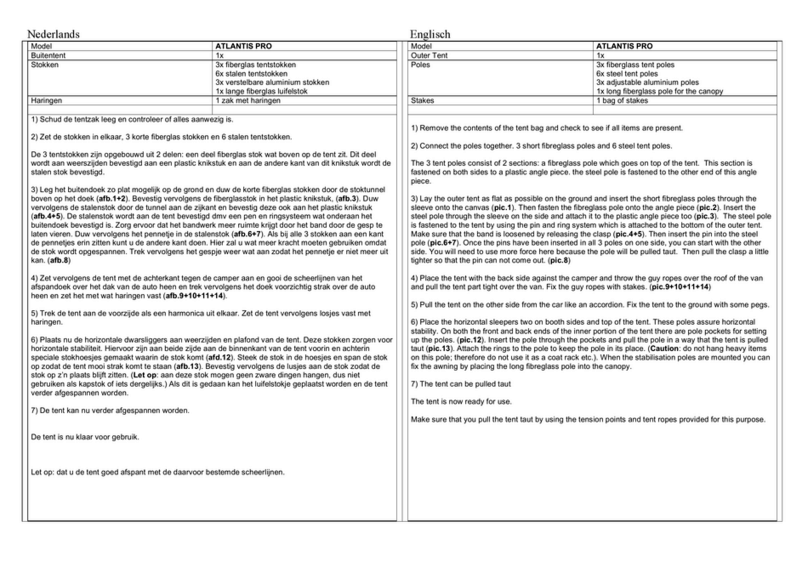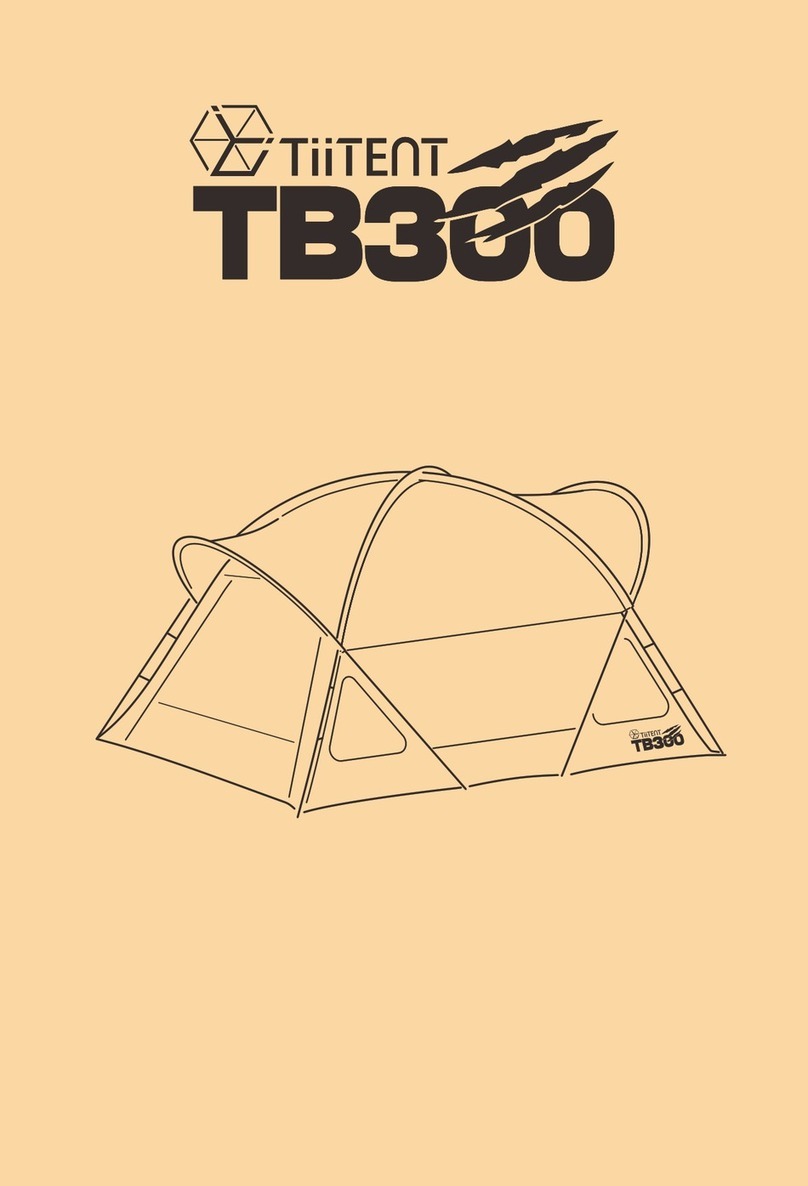
No Fire
This tent is flammable. Keep all flame and heat sources away from the tent fabric.
Never place a stove, campfire, or any other flame source in or near your tent. Never
use, light, or refuel a stove, lantern, heater, or any other heat source inside your tent.
Death by carbon monoxide poisoning and/or serious burns are possible.
Ventilation
Maintain adequate ventilation inside your tent at all times. Death by suffocation is
possible.
Anchor
This tent is not free-standing. If not properly anchored it will collapse. Anchor your tent
properly at all times to reduce the risk of loss or injury to the tent or occupants.
Campsite Choice
Carefully consider the possibility of falling rocks or tree limbs, lightning strikes, flash
floods, avalanches, strong winds, and other objective hazards when choosing a
campsite to reduce the risk of loss or injury to the tent or occupants.
Children
Do not leave children unattended inside a tent or camp.
Do not allow children to assemble or disassemble the tent.
Do not allow children to remain closed-up in a tent on hot days.
Do not allow children to swing on or hang from any part of this tent, organizers, or
guylines. Failure to follow these warnings may result in injury and/or death.
Before You Set Out
●It is recommended that you assemble this tent at home at least once before your trip to familiarize
yourself with the process, and make sure your tent is in good order.
●After initial set-up it is recommended that you spray the tent lightly with water and allow it to dry
completely. This “seasons” the canvas. The water causes the canvas to shrink slightly, closing needle
holes where the canvas was stitched. This process is only required once.
3
